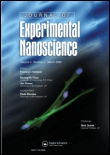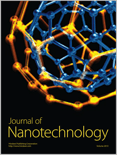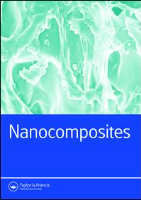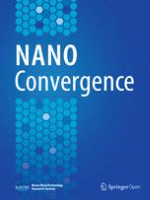
Nanobiotechnology Reports
Scope & Guideline
Unveiling innovations at the nanoscale.
Introduction
Aims and Scopes
- Nanoparticle Synthesis and Characterization:
Research on the various methods for synthesizing nanoparticles, including biological, chemical, and physical approaches, along with detailed characterization techniques to understand their physical and chemical properties. - Applications in Medicine:
Exploration of the use of nanotechnology in medical applications, such as drug delivery systems, cancer therapies, biosensors, and imaging techniques, focusing on improving efficacy and reducing side effects. - Nanomaterials in Environmental Science:
Studies on the role of nanomaterials in environmental applications, including water treatment, pollutant degradation, and the assessment of nanotoxicity in ecological systems. - Nanocomposites and Hybrid Materials:
Development and analysis of nanocomposite materials that leverage the properties of nanoparticles combined with polymers or other materials to enhance performance in various applications. - Theoretical and Computational Modeling:
Utilization of theoretical frameworks and computational models to predict the behavior of nanomaterials and their interactions with biological systems, aiding in the design of new nanomaterials. - Nanoscale Characterization Techniques:
Innovations in techniques for characterizing nanomaterials at the nanoscale, including electron microscopy, spectroscopy, and other advanced imaging methods.
Trending and Emerging
- Machine Learning and AI in Nanotechnology:
The integration of machine learning and artificial intelligence in the design and analysis of nanomaterials is on the rise, facilitating more efficient discovery processes and predictive modeling of material properties. - Biogenic Synthesis of Nanoparticles:
Research focusing on the use of biological systems to synthesize nanoparticles is gaining momentum, driven by the need for sustainable and eco-friendly production methods. - Smart and Responsive Nanomaterials:
Developments in smart nanomaterials that respond to environmental stimuli (e.g., pH, temperature) are increasingly prevalent, with applications in targeted drug delivery and environmental sensing. - Nanotechnology in Regenerative Medicine:
The application of nanotechnology in regenerative medicine, particularly in tissue engineering and stem cell research, is emerging as a significant area of focus, promising advancements in healing and recovery. - Nanoparticles for Antimicrobial Applications:
The exploration of nanoparticles for antimicrobial applications is rapidly expanding, driven by the need for novel solutions to combat antibiotic resistance and enhance infection control.
Declining or Waning
- Traditional Drug Delivery Systems:
Research focusing solely on conventional drug delivery methods is diminishing as interest shifts towards more innovative and efficient nanoscale delivery mechanisms that enhance therapeutic efficacy. - Basic Toxicological Studies without Contextual Relevance:
Studies that solely address the toxicity of nanomaterials without considering their applications or interactions in biological systems are becoming less prevalent, as research increasingly emphasizes contextual applications. - Static Nanomaterial Characterization:
Research that focuses solely on static properties of nanomaterials without considering dynamic interactions or real-time applications is waning, as the field moves towards more comprehensive, application-oriented studies. - Single-Function Nanomaterials:
There is a noticeable decline in the publication of studies that focus on the development of nanomaterials for a single function, as researchers are increasingly exploring multifunctional nanomaterials that can address multiple challenges. - Conventional Analytical Techniques:
The use of traditional analytical methods without integration of modern, advanced techniques is declining, as the field demands more precise and innovative approaches for understanding nanomaterial behavior.
Similar Journals

JOURNAL OF CLUSTER SCIENCE
Exploring the Frontiers of Cluster ScienceJOURNAL OF CLUSTER SCIENCE, published by SPRINGER/PLENUM PUBLISHERS, is a prominent and influential journal in the fields of Biochemistry, Chemistry, Condensed Matter Physics, and Materials Science. With an ISSN of 1040-7278 and E-ISSN of 1572-8862, this journal has been contributing to scientific discourse since its inception in 1990 and continues to publish cutting-edge research through 2024. It holds a respectable position in the academic landscape with its category quartiles indicating a Q3 ranking in Biochemistry and Q2 rankings in Chemistry, Condensed Matter Physics, and Materials Science as of 2023. The journal's noteworthy Scopus rankings further underscore its relevance, particularly a rank of #82 in Condensed Matter Physics, showcasing its impact and the quality of research disseminated. Although it does not currently offer open access options, it remains a key resource for researchers, professionals, and students who are invested in understanding the complexities of cluster science and its interdisciplinary applications.

Journal of Nanoanalysis
Unveiling the Potential of Nanomaterials CharacterizationThe Journal of Nanoanalysis is a leading publication in the field of nanotechnology, dedicated to advancing the understanding and application of nanoscale analysis methodologies. Published by BORNA SANJESH KIMIA CO-BSK CO, this journal aims to provide a comprehensive platform for researchers, professionals, and students to disseminate cutting-edge findings and innovative approaches in nanomaterials characterization, nanoelectronics, and related areas. With a focus on high-quality peer-reviewed articles, the journal supports the global scientific community in fostering interdisciplinary collaboration and knowledge sharing. Although currently lacking an explicit impact factor, the Journal of Nanoanalysis is poised to make significant contributions to the field, with its commitment to open access and accessibility globally enriching the pool of research available for academic and practical advancements.

MRS Advances
Connecting Ideas, Inspiring InnovationsMRS Advances, published by Springer Heidelberg, is an esteemed academic journal that serves as a vital platform for disseminating cutting-edge research in the fields of condensed matter physics, materials science, and mechanical engineering. With an ISSN of 2731-5894 and an E-ISSN of 2059-8521, the journal is hosted in Switzerland and encompasses an impressive spectrum of innovative studies that impact both theoretical and practical applications. Throughout its converged years from 2012 and continuing through 2024, MRS Advances has established itself with notable rankings, including Q4 in condensed matter physics and Q3 in several related categories. This journal not only enriches the academic community with its rigorous peer-reviewed articles, but also encourages open discussions that further advance research innovations. Although currently not designated as an open-access journal, its accessibility through institutional subscriptions ensures that professionals, researchers, and students can engage with the latest advancements in the material science arena. Emphasizing its relevance, MRS Advances is dedicated to fostering interdisciplinary collaboration and inspiring new discoveries within the global research community.

JOURNAL OF NANOBIOTECHNOLOGY
Unleashing Potential: Where Nanotechnology Meets BiomedicineJOURNAL OF NANOBIOTECHNOLOGY is a distinguished academic journal published by BMC in the field of nanobiotechnology, focusing on the intersection of nanoscience, biotechnology, and biomedical engineering. Since its inception in 2003, this open-access journal has played a pivotal role in disseminating high-quality research, becoming a leading platform for innovators and scholars alike. With a remarkable impact factor and consistently ranking in the Q1 category across multiple fields—including Applied Microbiology, Bioengineering, and Pharmaceutical Science—the journal demonstrates its critical relevance and influence in advancing knowledge and applications in nanobiotechnology. Furthermore, its impressive Scopus rankings reflect its commitment to rigorously peer-reviewed content, making it a go-to resource for researchers, professionals, and students striving to push the boundaries of science. Given its broad scope, covering emerging trends and technologies, JOURNAL OF NANOBIOTECHNOLOGY continues to foster collaboration and innovation across multidisciplinary fields, inviting submissions from across the globe.

Journal of Experimental Nanoscience
Transforming Ideas into Nanoscientific InnovationsThe Journal of Experimental Nanoscience, published by Taylor & Francis Ltd, is an esteemed open-access journal dedicated to advancing the field of nanoscience and its applications across various disciplines. Since its establishment, the journal has aimed to provide a comprehensive platform for researchers and professionals to disseminate innovative findings in nanotechnology, bioengineering, and materials science. With an ISSN of 1745-8080 and E-ISSN of 1745-8099, this journal has been pivotal in promoting high-quality research in its converged years from 2006 to 2024. Recognized for its contributions, it currently holds a Q3 ranking in core categories such as Bioengineering, Biomedical Engineering, Materials Science, and Nanoscience and Nanotechnology. Although its H-index is not specified, its Scopus ranks reflect its growing influence, with notable percentiles in various engineering fields. By offering open access since 2016, the Journal of Experimental Nanoscience enhances the accessibility of vital research to a global audience. Researchers, professionals, and students will find this journal an invaluable resource for staying abreast of the latest advancements and breakthroughs in nanoscience.

Journal of Nanotechnology
Fostering Interdisciplinary Discoveries in NanotechnologyThe Journal of Nanotechnology, published by Hindawi Ltd., is a premier open-access platform dedicated to delivering high-quality research in the dynamic field of nanotechnology. With the ISSN 1687-9503 and E-ISSN 1687-9511, this journal has been at the forefront of disseminating innovative findings since its transition to open access in 2009, fostering a global dialogue among researchers, professionals, and students. Based in Egypt, the journal maintains its commitment to advancing the material science sector, currently holding a prestigious Q2 ranking in the 2023 Materials Science (miscellaneous) category, reflecting its significant contribution to the field. With a Scopus ranking of #162 out of 463 journals in General Materials Science, placing it in the 65th percentile, the Journal of Nanotechnology serves as a crucial resource for those looking to explore the latest advancements and applications in nanomaterials. The journal invites submissions that align with its scope, which emphasizes interdisciplinary approaches and novel methodologies, promising to enhance both academic and practical aspects of nanotechnology.

Nanocomposites
Exploring the Future of Interdisciplinary MaterialsNanocomposites, published by Taylor & Francis Ltd, is a leading open-access journal dedicated to the interdisciplinary field of nanomaterials and their applications in composites. With its ISSN 2055-0324 and E-ISSN 2055-0332, the journal has established itself as a premier platform for disseminating high-quality research since its inception in 2015. It is notable for its impressive Q1 rankings across various categories, including Ceramics and Composites, Materials Chemistry, Mechanical Engineering, and Mechanics of Materials, reflecting its significant impact on the scientific community. The journal is recognized for its rigorous peer-review process and rapid publication times, making it an essential resource for researchers and professionals seeking to advance knowledge in the synthesis, characterization, and application of nanocomposite materials. With an open access policy implemented in 2017, Nanocomposites ensures that cutting-edge research is accessible to a global audience, fostering collaboration and innovation across disciplines. Emphasizing the critical role that nanocomposites play in advancing technology, this journal invites contributions that push the boundaries of current understanding and application.

Discover Nano
Connecting Ideas, Shaping the Future of NanoscienceDiscover Nano is a pioneering journal published by SPRINGER, dedicated to the rapidly evolving field of nanoscience and nanotechnology. Established in 2023, this innovative platform provides an open-access forum for researchers, professionals, and students to share and disseminate cutting-edge findings in materials science and condensed matter physics. With its commitment to accessibility, Discover Nano encourages a broad spectrum of contributions, aiming to foster collaboration and stimulate discussion in this dynamic area of study. As a new entry into the academic community, the journal holds great potential for growth, aspiring to increase its visibility and impact in the materials science arena, where it currently ranks in the bottom quartile for both materials science and physics categories. Based in Germany and reaching a global audience, Discover Nano represents a significant opportunity for those looking to shape the future of nanotechnology through impactful research and interdisciplinary dialogue.

Nano Convergence
Transforming the landscape of materials science through collaboration.Nano Convergence is a premier open access journal dedicated to the rapidly evolving fields of nanotechnology, materials science, and engineering. Published by SPRINGER, this journal has been at the forefront of interdisciplinary research since its inception in 2014, and is set to continue its journey until 2024. With an impressive impact factor and recognition as Q1 in both Engineering (miscellaneous) and Materials Science (miscellaneous) categories, Nano Convergence ranks among the top publications, listed as Rank #8 out of 307 in General Engineering and Rank #34 out of 463 in General Materials Science according to Scopus metrics. This journal provides a platform for researchers, professionals, and students to share pioneering studies that converge different disciplines within nanotechnology. With its commitment to open access, Nano Convergence ensures that cutting-edge research is readily available to the global community, fostering innovation and collaborative advancements in the field.

Journal of Nano Research
Fostering Collaboration in NanotechnologyThe Journal of Nano Research, published by Trans Tech Publications Ltd, is a distinguished academic journal dedicated to the rapidly evolving field of nanotechnology and materials science. With an ISSN of 1662-5250 and an E-ISSN of 1661-9897, the journal has been an important platform for researchers and professionals since its inception in 2008, continuing to provide high-quality peer-reviewed research through to 2024. Nestled in Switzerland, the Journal of Nano Research plays a pivotal role in disseminating cutting-edge findings, as recognized by its categorization in Q3 for Materials Science and Physics while being positioned in Q4 for Nanoscience and Nanotechnology as of 2023. With Scopus rankings highlighting its impact, including Rank #129 in general Physics and Astronomy and Rank #300 in Materials Science, this journal is crucial for academics seeking to stay ahead in research trends and innovations in nano-related disciplines. Although it operates under a subscription model, the journal's objectives include fostering collaboration and knowledge-sharing among researchers, making it an invaluable resource for anyone immersed in the world of nanotechnology.